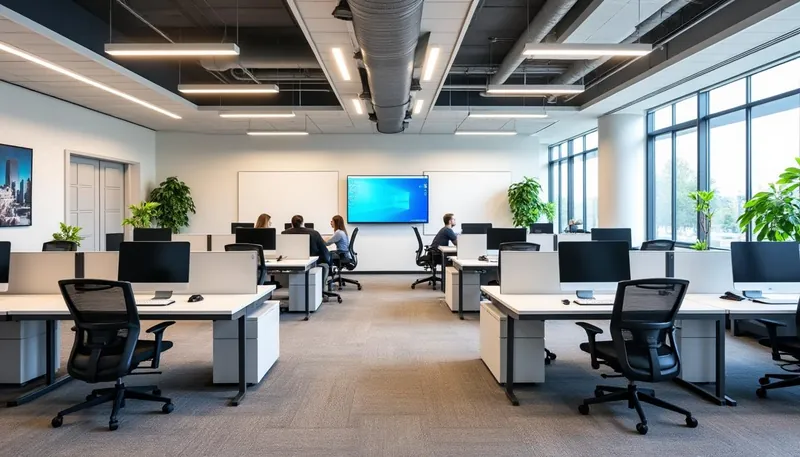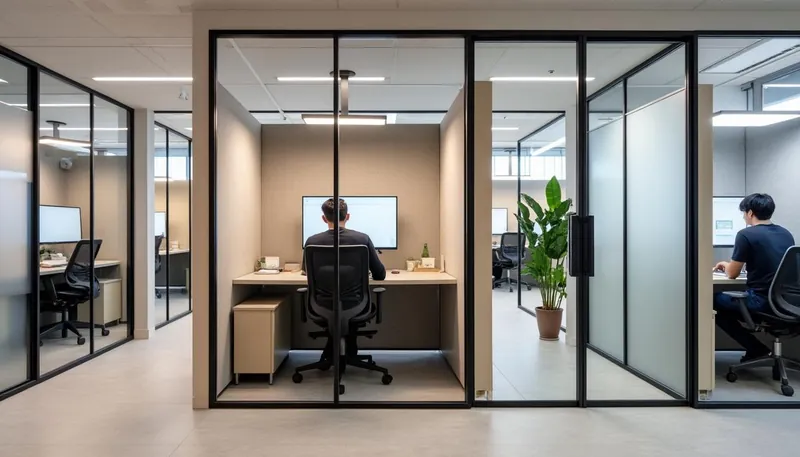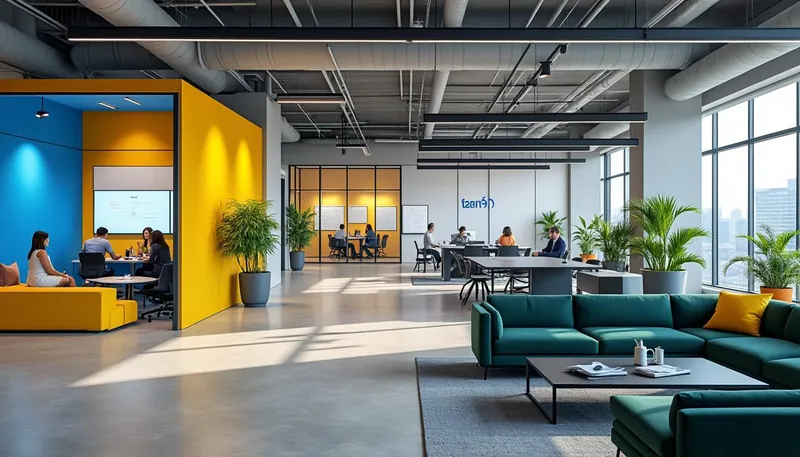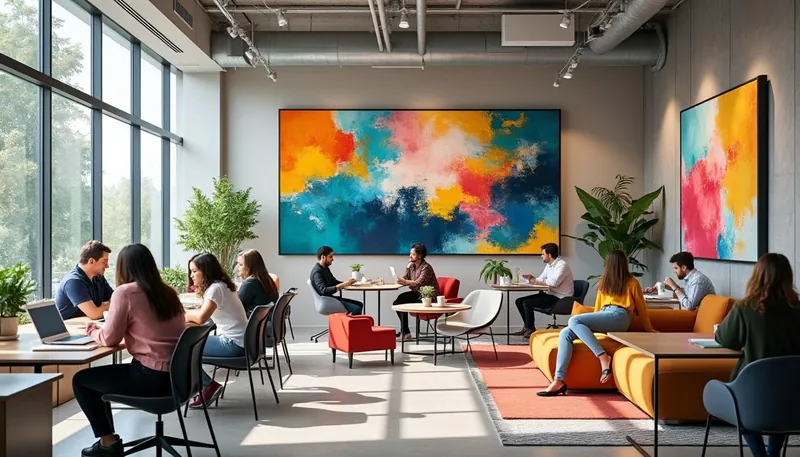In the evolving landscape of work environments, the concept of office zoning has gained traction as a means to foster productivity, creativity, and collaboration. As we navigate through 2025, organizations are rethinking how office layouts can be strategically deployed to meet the diverse needs of various teams while fostering a harmonious workplace culture. The right zoning approach can transform a standard workspace into a hub of innovation and efficiency, allowing employees to thrive in their respective roles. Balancing collaboration with quiet, focused areas creates an atmosphere that is not just functional, but also inspiring. So, what are the best office zoning ideas tailored for different teams? Let’s explore innovative concepts that can reshape your work environment.
In brief:
- 🏢 Team-based Neighborhoods: Design spaces that foster collaboration within specific teams with flexible arrangements.
- 🤝 Informal Meeting Areas: Encourage spontaneous discussions in open, accessible zones.
- 🔕 Focus Zones: Create quiet retreats for deep work away from distractions.
- 🌳 Outdoor Meeting Rooms: Utilize outdoor spaces to inspire creativity and boost employee well-being.
- 📊 Activity-based Workspaces: Allow employees to choose environments that best suit their current tasks.
Creating Team-Based Neighborhoods for Enhanced Collaboration
Team-based neighborhoods are revolutionizing how groups collaborate within the office. This innovative zoning concept designs spaces specifically to enhance teamwork and creative processes. Imagine arriving at an office where your surroundings naturally encourage collaboration through thoughtfully arranged areas that cater to different needs.
Characteristics of Team-Based Neighborhoods
These modern workspaces are not operating on traditional cubicle-style setups but instead focus on flexible design elements such as:
- 🪑 Flexible Furniture: Think desks that can be rearranged, lounge chairs, and sofas that make it easy to shift from working alone to group brainstorming sessions.
- 💻 Interactive Tools: By placing tools like whiteboards and digital screens within easy reach, teams can seamlessly transition from discussion to action.
- 👥 Strategic Layouts: Depending on project dynamics, some areas might be assigned to specific teams while others remain open for spontaneous collaboration.
One company that has successfully implemented these neighborhoods is Steelcase, promoting teamwork and interdepartmental communication through adjustable workstations and communal spaces that support various functions. By actively analyzing usage patterns, organizations can adapt these neighborhoods to continually meet changing team needs.
Benefits of Team-Based Neighborhoods
The advantages of team-based neighborhoods extend beyond mere aesthetics. Here’s why they’re pivotal for modern work culture:
- 🔗 Connections: By allowing employees to interact more frequently, these zones help break down silos between departments.
- 🚀 Productivity: Employees are more likely to engage and contribute when they’re in an environment that encourages teamwork.
- 👌 Customization: Workspaces can be tailored according to team preferences, making them feel more personal and conducive.

Informal Meeting Areas: Spontaneous Collaboration at Its Best
Incorporating informal meeting areas into office zoning is essential for fostering creativity. These zones serve as casual spaces for spontaneous conversations, quick check-ins, or brainstorming sessions without the rigidity of formal conference rooms.
Design Considerations for Informal Meeting Spaces
When crafting these areas, consider the following elements:
- 🌐 Central Locations: Positioning these meeting spots in visible, high-traffic areas encourages usage and reduces the likelihood of underutilization.
- 🛋️ Comfortable Seating: Incorporating a mix of seating options, such as bean bags, sofas, or high-top tables, creates an inviting atmosphere.
- 📏 Clear Usage Guidelines: Implement designated use policies to avoid overcrowding while promoting organized access.
For instance, HON designed a series of informal zones that not only prioritize easy access but also maintain aesthetic value. These spaces are great for those quick discussions that can infuse a project with innovative ideas while reducing wait times for traditional meeting rooms.
Outcomes of Incorporating Informal Meeting Areas
The addition of informal meeting places has tangible benefits:
- 💬 Enhanced Communication: Allowing team members to engage in casual settings enhances rapport and encourages idea sharing.
- ⏰ Efficient Collaboration: Quick meetings can spark insights without the need to book larger rooms, saving time and increasing productivity.
- 🌟 Creative Atmosphere: Casual spaces can foster a relaxed vibe, which often leads to more creative solutions and open-mindedness.
Focus Zones: Crafting Spaces for Deep Work
While collaboration is essential, deep focus work remains a crucial component of productivity. Creating focus zones requires deliberate design for environments conducive to uninterrupted work.
Crafting the Perfect Focus Zone
To ensure these areas meet employee needs, consider the following:
- 🔒 Privacy: Offering soundproof pods or secluded partitions can significantly enhance concentration by minimizing distractions.
- 🌿 Atmosphere: Utilize soothing colors, soft furnishings, and natural light to provide a calming milieu that promotes focus.
- 📊 Clearly Defined Spaces: Creating a dedicated area for focused work ensures individuals know where they can go for some quiet time.
The firm Herman Miller uses soundproof booths to allow employees to remove themselves from the hustle and bustle of open areas for tasks requiring deep thought, effectively increasing overall workplace efficiency.
Advantages of Focus Zones
The impact of having designated focus areas cannot be underestimated:
- 🧠 Boosted Concentration: Employees can tackle complex tasks without interruptions, leading to higher quality output.
- 🗓️ Flexibility: Adaptable spaces can accommodate individual preferences, making personal work habits respected.
- 📈 Enhanced Job Satisfaction: Employees are more likely to feel valued when their needs for focus and concentration are acknowledged by management.

Outdoor Meeting Rooms: Nature’s Influence on Workplace Creativity
The trend of incorporating outdoor meeting rooms reflects a broader understanding of the benefits of nature on employee well-being and creativity. These spaces represent a breath of fresh air—both literally and metaphorically.
Designing Effective Outdoor Meeting Spaces
Outdoor areas must be functional as workspaces while also being inviting. Key aspects include:
- 🌞 Weather-Proof Designs: Ensuring these areas have suitable furniture and protection against the elements promotes year-round usability.
- 🔌 Connectivity: Providing power outlets and access to technology ensures productivity is maintained even outdoors.
- 🧘 Comfort and Accessibility: Including softer seating and biophilic elements can enhance the aesthetic appeal and comfort level.
Companies like Knoll have embraced this concept, creating outdoor meeting rooms that make use of natural light and fresh air, fostering a stimulating environment for brainstorming sessions and team retreats.
Benefits of Outdoor Meeting Rooms
Adopting outdoor spaces translates to multiple advantages:
- 🌼 Increased Mood and Motivation: Being in nature has been shown to boost morale and reduce stress.
- 📜 Creative Boost: Exposure to outdoor elements can spark innovative thinking and inspire fresh ideas.
- 🏞️ Team Bonding: Offering a change of scenery encourages relaxation and strengthens team dynamics.
Activity-Based Workspaces: Flexibility Meets Individual Needs
Activity-based workspaces (ABW) break free from the “one-size-fits-all” approach, allowing employees to choose where and how to work based on the task at hand. This adaptable zoning promotes productivity and accommodates diverse workflows.
Key Features of Activity-Based Workspaces
To ensure ABW delivers on its promise, some important features include:
- 🔄 Variety of Zones: Work areas should span collaborative spaces, quiet zones, and casual lounges to cover all work types.
- 📲 Non-Assigned Seating: Hot-desking arrangements let employees choose their preferred workspace, whether they need quiet or collaboration.
- 📊 Integrated Tech: Ensuring seamless connectivity across all zones enhances productivity, minimizing disruptions.
Companies like IKEA have embraced ABW principles to create comfortable and inviting environments where employees can thrive, flexibly adapting to their diverse work styles.
Benefits of Activity-Based Workspaces
Implementing ABW comes with numerous benefits, such as:
- 🌎 Encouraged Mobility: Employees can switch spaces throughout the day based on their tasks, keeping them invigorated and motivated.
- 🔧 Flexibility: Allowing personal work style flexibility can lead to higher job satisfaction and productivity.
- ⏳ Efficient Space Management: Activity-based setups can optimize resource allocation while providing for the varied needs of each employee.
What is office zoning?
Office zoning refers to the strategic layout of workspaces within an office to enhance productivity and tailor environments for specific tasks and teams.
How can informal meeting areas boost creativity?
By providing spontaneous, casual spaces for collaboration, informal meeting areas help ideas flow freely without the constraints of a formal setting.
What are the advantages of activity-based workspaces?
Activity-based workspaces provide flexibility, allowing employees to choose areas that best suit their tasks, promoting productivity and satisfaction.
How do outdoor meeting rooms affect employee well-being?
Access to outdoor meeting rooms can improve employee mood, reduce stress, and enhance creativity by connecting them with nature.
What role do focus zones play in productivity?
Focus zones serve as designated areas for deep work, minimizing distractions and allowing employees to concentrate on their tasks.


